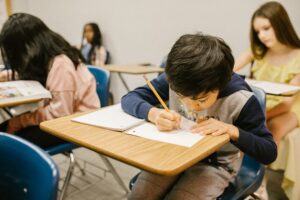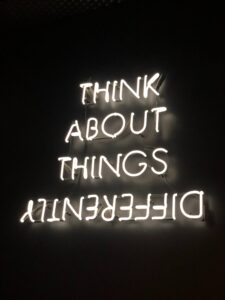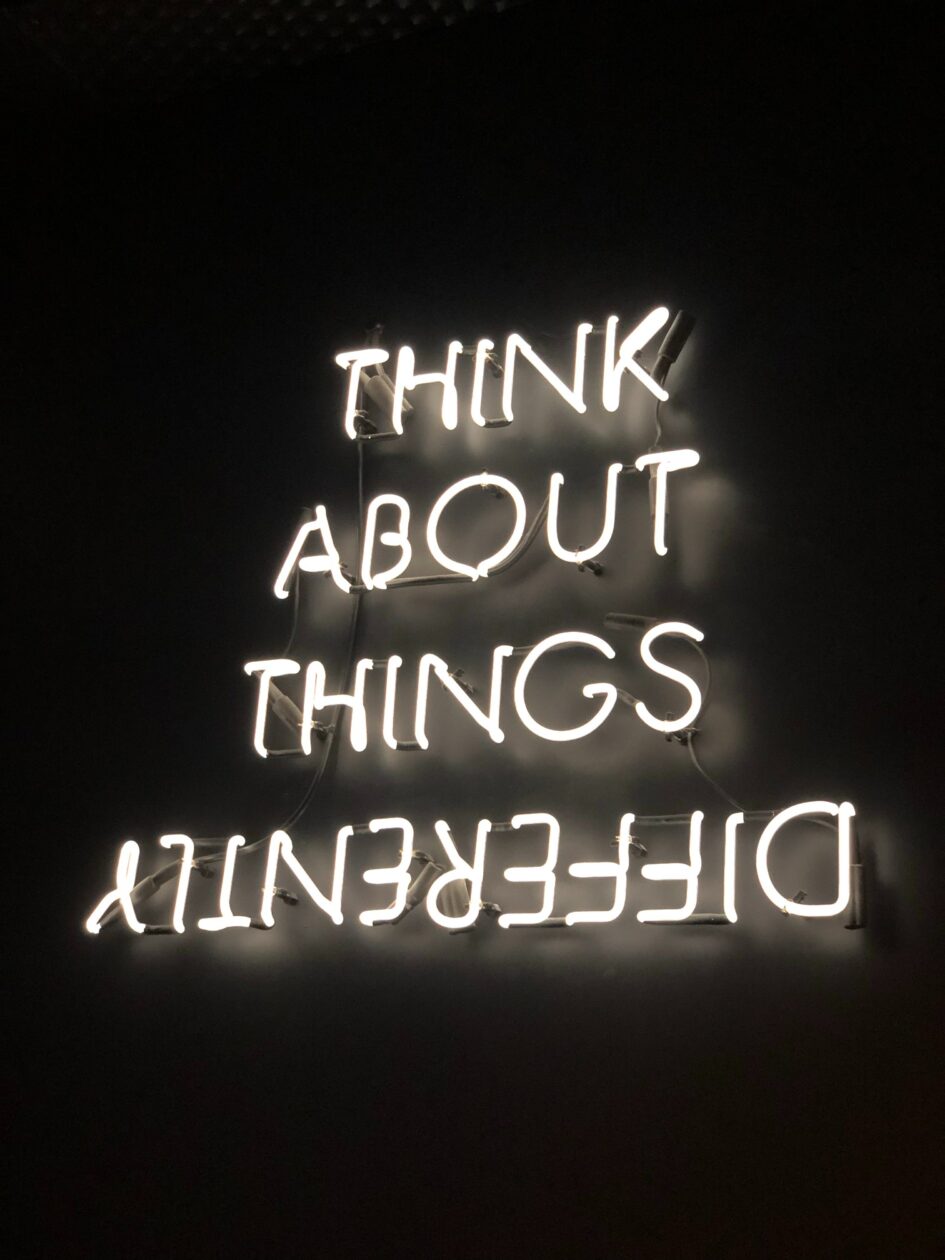EDUC 336: Inclusive Education
For me, the learning for this course culminated in an explanation of the ADAPT strategy and potential adaptation strategies for a particular case study.
Adaptations for An Exceptional Learner
The ADAPT strategy consist of the following educational preparation elements: Account of student strengths and needs, Demands of the classroom, Adaptations, Perspectives and consequences, and Teach and assess the match (Hutchinson 2004, pp 24-28). Each of these aspects consists of specific criteria and will be explored using a published case study (Hutchinson 2004, pp 56-57) in which an account of Urjo, an exceptional learner who is experiencing difficulty in the class setting, is explored. If I were an intern teacher in Urjo’s class, I would use apply the ADAPT strategy for adapting teaching with the student to highlight his strengths and promote a greater sense of belonging within the classroom. To elucidate, I will go through each aspect of the ADAPT strategy, explaining how it might be used.
Account of student strengths and needs
Urjo has strengths that need to be recognized. He excels in art class, is engaged and quiet when drawing or painting, and from this, one can derive that Urjo exhibits high motivation for art-based activities. However, Urjo exhibits several learning tendencies, including poor reading skills, task avoidance, a pattern of incomplete homework, and negative attitude toward self and others. To promote positive engagement, he needs to feel that he has control, positive experiences with peers, and to be given work that is not “boring and pointless” to him.
Demands of the classroom

https://www.pexels.com/@rodnae-prod#:~:text=Join-,RODNAE%20Productions,-Follow
In my ideal classroom, students would work individually and with peers regularly. They would be paired or in groups for learning activities and then do assignments mostly individually. Lessons would be similar in nature, so that students would know what to expect. Each day would begin with a short review, then a ‘hook’ to garner interest, a mini-lesson that could be broken up with some physical literacy incorporations, or activities that involve moving (i.e. centers or stations), followed by a co-ordinating group or individual mini-assignment to check for understanding, and lastly individual project work time. While Urjo may struggle during the hook, the mini-lesson, and mini-assignment, hopefully the pacing, changes, and opportunities to move would be helpful. As the teacher, I would model positive interactions and respect for all students. I would make sure that Urjo can see the smartboard or chalkboard, and is not too far away. Additionally, learning texts could be changed to include art pieces and theory as a lens for the learning (i.e. History through art). To ensure ample practice time, students would be assessed formatively on mini-assignments noted above, and summatively on individual projects.
Adaptations
Potential mismatches between student strengths and needs and demands of the classroom exist in the form of the group/peer activities, which seem make Urjo feel uncomfortable and undervalued, hence his shouting at peers and unwillingness to cooperate. Although Urjo’s writing ability is not mentioned in the synopsis, since he prefers art and is uncooperative when pressured, a teacher could hypothesize that writing-based activities and share outs may cause the student discomfort. For these reasons, the adaptations that I might try would be group and peer activities with a scaffolded approach that is closely directed at the beginning and progresses toward guided with eventual personal autonomy as the ultimate goal, whiteboards incorporated into daily activities, and teaching the class how to sketch-note. However, for the purpose of brevity, I will only elucidate on that of using whiteboards during class activities.
Perspectives and consequences
The Perspectives and consequences of this case are particularly complicated and therefore deserve extensive considerations. Firstly, as a teacher candidate, I am aware that my experience with adaptations is in its formative stages, but from what I have already seen and experienced, From what I have observed, when used in combinations with Universal Design for Learning (UDL), the adaptations seem to benefit all learners, allowing those who are behind, were absent, or just need more time with a concept the chance to catch up and generate ideas. One adaptation that I would use with Urjo’s class to adapt for his learning style is whiteboards. Either small, personal-size or large, wall-hanging whiteboards, provide an avenue for students to learn where their work does not have to be perfect. Since it will be erased anyway, there is less emphasis on perfection and more on learning, which increases students’ willingness to try. Students usually like writing on the large boards because they don’t get to very often. Like any physical activity, standing and moving while writing (taking steps and the larger motions of hands and arms) provide increased circulation and dopamine excretions, which provide positive feelings and result in generally happier students.
Secondly, a teacher should consider how time consuming an adaptation is likely to be. Whiteboards save time because students do not need to worry about perfection and they can spend additional time on iteration and solidifying concepts. Next, the demands on me, as the teacher, might be significant, as depending on the resources available at the school, I may have to apply for funding or provide the financial means to acquire a class set of whiteboards personally if I want them. As well, whiteboard markers would be needed, and need replacement regularly, so I would have to consider those costs, too. I do not think the adaptation of adding whiteboards to classroom activities would change the fundamental nature of teaching for me, and I think I would find witnessing the learning satisfying. Since whiteboards would promote student engagement, learning, and possibly even positive mood, I would probably experience pride and a sense of accomplishment in helping learners to be able to learn. I think this would result in a better environment for everyone in the class.

https://www.pexels.com/@ibertola#:~:text=Join-,Ivan%20Bertolazzi,-Follow
From the student’s perspective, I could see this adaptation going well because it utilizes his artistic ability while increasing his potential to try other ways of learning, like writing and sharing, with minimal potential consequences. Additionally, a whiteboard offers Urjo control over how he shows his learning, and what aspects he chooses to include. Using whiteboards does not have an age-limit or other limiting factors associated with it, so there would be no unwanted attention. Indeed, since the whole class would be using the whiteboards at the same time, so the practice might facilitate the development of an increased sense of belonging in the classroom. Additionally, as the teacher, I could circulate the room, making positive comments and asking questions that show I am paying attention to all the students, not just Urjo, without drawing specific attention to him. I also ask students if they would be willing to share with the class during this time, to give them a sense of advocacy and opportunity to frontload. Whether Urjo decided to share or not, this would also serve to validate that his way of learning and what he knows is important, useful, and relevant to everyone. I think the effort that this adaptation would require on Urjo’s part would be perceived as worthwhile because the potential rewards are significant. Urjo would get to engage in the activity he enjoys and know that he is behaving in an accepted manner; he would have the opportunity to perceive himself as a valued part of the learning community which would raise his self-esteem and probably promote continued improvements, both academically and socially. The change to whiteboards would encourage the student to feel “competent, connected to others in the classroom” if he were “part of a well-functioning group” (Hutchinson 2004, p. 27), so it is likely that Urjo would be partial to the adaptation. Additionally, whiteboards would mean more fun and less pressure for the rest of the class, too, so there would probably be group buy-in. It is unlikely that his classmates would notice that there was an adaptation, and they would definitely not know that it was geared toward a particular student. Rather, it is likely that the other students would notice the benefits of whiteboards as they, too, would be able to show what they know through different means, in a low-stakes manner, that allows for formative feedback opportunities before summative assessment.
Urjo’s parents would probably be thrilled that their child’s strengths were being appreciated, and they might feel supported to have a teacher working with them and advocating for Urjo’s value in the classroom. If the adaptation goes well, they might be relieved to see fewer outbursts at school, and happy that their child was experiencing success. Like their children, other parents would probably not perceive that an adaptation was being implicated, so there would likely be no issues. Since their children would benefit from the whiteboards, too, the other parents would probably feel similar to those of Urjo.
There is no doubt that any adaptation will have consequences, both intended and unintended. Some of the intended consequences include providing Urjo with a way he can display his learning with confidence, so that he will be more willing to try to learn. Together with this increase in motivation, making the content more relevant to Urjo’s interests by allowing him to express learning in an artistic manner might also increase cooperation and decrease behavioural incidents in the classroom. Being able to control how he shows his learning would increase his willingness to participate, which would build his confidence and increase academic performance and sense of belonging. All of these together will probably result in a child more inclined to positive feelings, which could lower the incidences and scale of outbursts. With more self-esteem, Urjo would also probably engage in less negative self talk and verbally attacking others. Hopefully, Urjo will come to associate gaining knowledge and skills with something he already loves – art – and this association will help him overcome some of the barriers he is working against. In contrast, some unintended consequences are that Urjo might use the whiteboards to draw whatever he prefers, instead of engaging with the class. He may not pay attention to what the class is doing. However, he would still be behaving in a more accepted manner in the classroom and will hear what is going on around him, likely taking some of the learning in. If he is calm while drawing, as the synopsis suggests he would be, then I could compliment him on his temperament. Acknowledging the small victories by recognizing any improvement will help establish relationship and trust. Once that is established, Urjo and I, as the teacher, could work on the next goal.
Teach and assess the match
I think that this adaptation would match Urjo’s strengths extremely well, and also meet his needs for control and making learning interesting and more relevant to him. There would probably need to be alterations in some aspect of the adaptation. This is because it is impossible to know how another person (the student) will react or predict with total accuracy the choices they will make. However, the likelihood is high that Urjo will be more successful with the adaptation because the rewards and motivations are high and would be evident to him. He would likely be engaged during the whiteboard activities because he gets to do art. Additionally, with time and practice, Urjo can know that he is in control of his learning and he is seen as successful by his teacher, peers, parents, and others. This is a strong motivator for most teenagers.
Assessment Adaptation Strategies
Three assessment adaptation strategies I would apply with Urjo include: portfolio-based assessment, using one-point qualitative rubrics to communicate where students are at, what they are already doing well, and what they should focus on improving, combined with regular one-on-one interviews to ensure the student understands how his grades reflect what he had learned and earned.
Two advantages of these assessment adaptations are that it give Urjo control over how he exhibits his learning. The portfolio would allow Urjo to choose the method in which he feels most confident showing learning (drawing/painting with explanation, comic, 3-D models, and other artistic mediums would be allowed) and he could also choose his best work to include. The one-point rubric style is simple in that lets Urjo know that he is doing something right and what to work on next, without adding too much additional and confusing or overwhelming information. It is easy to understand, and once some familiarity is built, Urjo could likely use this type of rubric for self-assessments, increasing his self-efficacy and, hopefully, willingness to learn. The interviews would be another way that Urjo can communicate understanding to his teacher, and also provide an opportunity for me to communicate and make sure he understands his grades. This would potentially help build a relationship and trust between us. Even if this is not the result, the interview provides Urjo with a safe place to practice social interactions.
One of the advantages for me, as the teacher, is also the simplicity of the rubric. It is quick to fill out and that makes marking easier. It is easy to see where the student is at and what comes next for planning and reporting. The portfolios also aid in reporting and developing the student’s pride in his work, which may make him more inclined to work without outbursts and is another advantage for me, as the teacher candidate.
Conclusions
The process of this assignment helped me to dig deeper into ways to develop an inclusive classroom. Before taking this course, I was unaware of the importance of inclusivity and the work that goes into it. I was unable to see how I could plan for exceptional learners that I did not yet know. After going through the above exercise with the needs of a specific student in mind, I feel more confident that I can apply this same process to learners that I will encounter. Now I understand that true inclusivity is not just happenstance, but a planned and purposeful element of a classroom.
References:
Hutchinson, N. L. (2004). Case 21: What a puzzle! In N. L. Hutchinson, (Eds.). Teaching
exceptional children and adolescents: A Canadian casebook. essay, Prentice Hall.

Leave a Reply